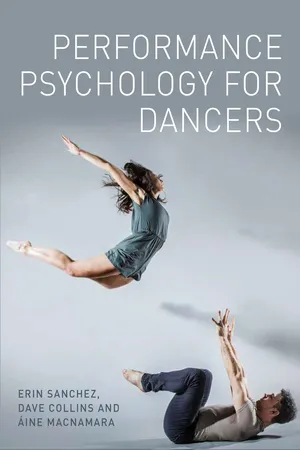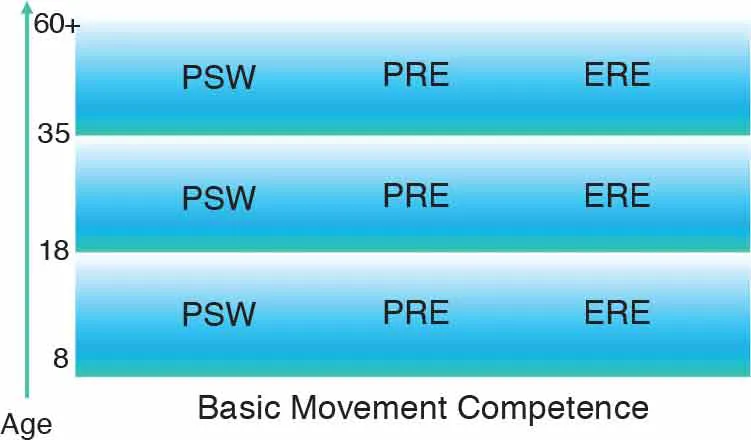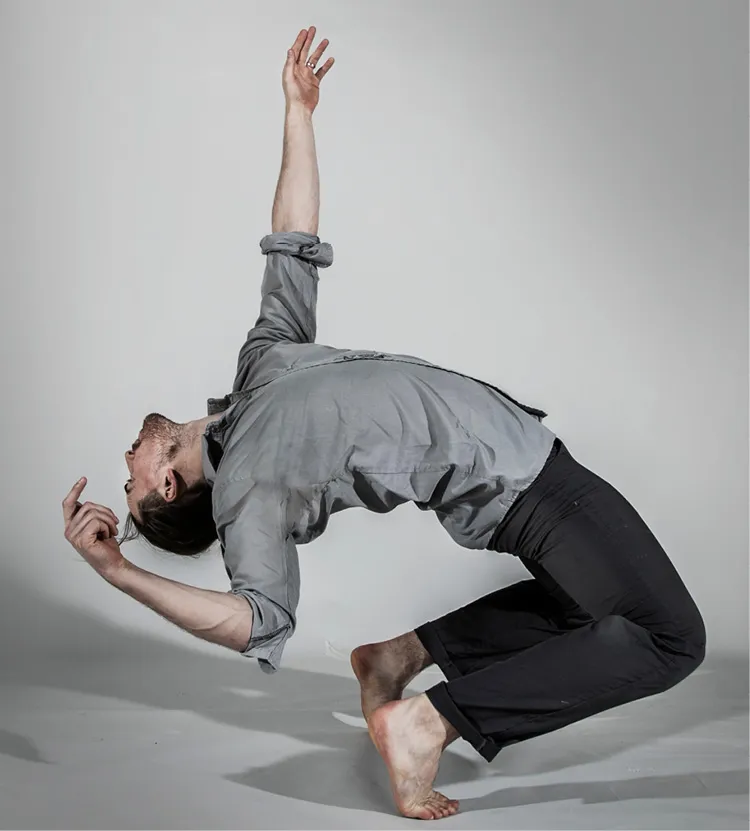![]()
PART 1
IDEAS
Dancers and those that support them can use this section to generate and refine their thinking about what they want to achieve.
Skills: self-reflection, questioning, confidence, motivation, harmonious passion, creative and flexible thinking.
Outcome: To define what success will look like for you.
![]()
CHAPTER 1
PARAMETERIZING THE CHALLENGE:
WHICH WAY IS THE WAY?
What Do You Want? (Fig. 1.1)
If you have picked up this book, you are clearly interested in dance. It is always sensible to get as much information as possible as you plan your future or try to support a family member or others towards success.
What do you want? Each individual can use this book to help achieve the best that they are capable of and wish to commit to.
Figure 1.1 This figure comes from a project looking at the ‘life pathways’ that participants in a variety of different sports and physical activities could follow. The ‘Three Worlds’ Continuum (developed from Jess & Collins, 2003). Adapted from ‘Participant development in sport: An academic review’, Bailey et al. (2010). Sports Coach UK, 4, 1–134.
Before we start, however, it is worth considering those goals in slightly more detail, starting with what the book you are holding aims to do. This book is not about how to guarantee success in a dance career, although the advice and information included here could be used to significantly improve your preparation and, therefore, your chances of reaching that goal. This is a book about how to nurture young talented individuals by supporting their potential and intelligence, and by preparing them to realize their best possible outcome. The eventual goal could be an elite performance on stage, committed involvement in a non-performing role in the dance profession, or a career doing something meaningful and fulfilling and completely unrelated to dance. The main point is that each individual can use this book to help achieve the best that they are capable of and wish to commit to. Furthermore, each person can achieve their goals, recognizing that these may change with time and experience.
A person can aim at any time for performances that fit into one of three categories, relating to their own personal goals. These are as follows:
•ERE or Elite Referenced Excellence. In ERE, your ability is measured by your status against others or through competition. For example, ‘I’m a principal dancer at XXX’, ‘I toured with XXX’, ‘I won the YYY prize/competition’ or ‘I am the XXX world champ’.
•PRE or Personally Referenced Excellence. In PRE, your ability is based on how you have developed in relation to your own past performance. For example, ‘After all that hard-focused practice, I can see my skills improving’ or ‘I feel I am performing and competing much better recently’.
•PSW or Physical Self Worth. In PSW, your involvement in dance is a personally beneficial thing. ‘I dance because I enjoy it, it helps me stay fit, it makes me feel good about myself, or I just love the environment and people associated with it.’ This could also be ‘I love it. After dance classes, I feel energized and at one with myself.’ or ‘Dance is important in my life. I just am a dancer’.
Basic Movement Competence
Finally, note that your ability to be successful in any of the categories above, or to move between them, is built on a base of sound movement skills. This will be covered in Chapter 3.
The aim is to equip you for the experience and level you want. These ‘three worlds’ are not distinct categories; they are a continuum. Further, one is not any ‘better’ than the others; it depends on what you want.
Finally, you can pick a pathway through the worlds as you progress. Some people will be driven to perform in the ERE world when they are young, then perhaps move towards PRE or even PSW as they gain more experience. Others will come later to performance, seeking an ERE/PRE combination when they are older. The point is to know where you are going, as this makes it easier to plan and focus. We will cover this in the next chapter. For the moment, keep in mind one of the mantras that will recur throughout this book: ‘It depends.’
A Note About ‘Eliteness’
Throughout this book, when we discuss elite excellence, we are referring to the contexts where individuals are either performing professionally or training intensively or competitively with the intended outcome of a professional career as a performer. Although we recognize that motives, levels of engagement, short- and long-term professional goals, and, importantly, potential or ability, can and will change. As such (1) not all ‘elite’ dancers in training or professional careers are inherently competitive or focused on engaging with dance at a constant, intensive level, (2) those participating recreationally may have competitive or intensive engagement with dance at times, (3) both groups may engage in dance out of a variety of motivations – a love for movement, a desire for a benefit that dance brings, or outside pressures and (4) that your engagement with dance may (and probably will) change throughout your life – whether you are a professional who retires or someone who dances recreationally and suddenly changes pathways into a professional career at an unexpected time.
How Might You Get There?
Continuing the ‘it depends’ theme, we must emphasize that, just as there are myriad goals or motivations in dance, there is also no one way to achieve them. Rather, what we offer is a set of principles, together with a variety of tools and considerations, focused on preparing you for whatever path you wish to take or opportunities that arise. In other words, each suggestion is conditional on what you want, who you are (your particular strengths and weaknesses, plus age and stage of development) and the dance style or styles that you wish to pursue. Interestingly, our own research suggests that the types of activity and approaches suitable for those focused on top-level performance or lower-level participation are a good deal closer than many have suggested (cf. Collins & Bailey, 2015). Please don’t be surprised if, after careful consideration of alternatives, your plan ends up with several features common to someone else’s, even though they have a completely different set of targets. The whole thing won’t be totally the same but there are several principles that apply across the three worlds’ spectrum. We cover these ideas in the ‘Defining Success’ box, where quotes from dancers illustrate how widely things can vary but also what core similarities exist.
What is the goal right now and how does it relate to ERE, PRE or PSW?
IDENTIFYING GOALS
Before continuing, take a moment to think about Elite Referenced Excellence, Personally Referenced Excellence, and Physical Self Worth.
Go back and read through what they mean once more, and decide which one is relevant in your situation, right now. Try to be focused on what is happening now, rather than thinking too much about the future (or the past). If it helps, consider how this goal may have changed over time, but try to come back to what it is right now.
Next, consider why this is the goal now. There is no right or wrong answer but be aware of the reason for the choice you’ve made.
Once you have thought about this, write down what the goal is right now and how it relates to either ERE, PRE or PSW.
DEFINING SUCCESS
No book or person can definitively describe how to become a successful dancer, but tools and support exist to help fulfil potential and reach goals, no matter what they are. Although the idea of following a recipe for success sounds very tempting, for a recipe to work, the assumption would be that all success looks the same. However, success in dance isn’t just one thing, and more often than not, it looks different for different people.
How do you define success? Take a minute now and imagine your future, successful self. What is that person doing?
Definitions of success could be based on others’ expectations, examples of successful people you’ve been exposed to, on values or beliefs. It might also be based on whether skills and success are judged based on the star factor (ERE), self-development and improvement (PRE) or purely on loving the feeling of dancing (PSW). The important thing to remember is that ‘it depends’.
To get to future successes, you need to have an idea of which way you are going. You might already know (and have started on your way), but if you’re not sure yet, you can start by asking yourself some questions:
•Is dance your only passion or one of many?
•Is dance a career or purely for enjoyment?
•Do you see yourself:
◊Under the spotlight or behind the scenes?
◊Creating the next big creative idea or being a great interpreter of someone else’s vision?
◊Fitting into the existing world of dance or blazing a new trail?
•Are you more likely to dance in a tutu, trainers or tap shoes?
•Perhaps you’ll be enjoying your own dancing style without a professional performing career?
If you are starting to feel a little bit confused – don’t worry. You may not be sure yet what success will look like for you. It may take some time to think it through. And if you already know exactly what success looks like – your idea of success may just change as you continue to grow, change and develop.
Research among dancers has indicated that defining success based on factors within your control, such as learning, passion, enjoyment or love, will increase dancers’ overall positive affect. (Quested and Duda, 2010).
Physical Self-Worth (PSW)
Professional dancers define success in lots of different ways, and it may help you to hear some of what they think.
I think success is like when you’re feeling happy and settled in what you’re doing and where you’re going. Success for me as well is about lining up all the different parts of my life so that everything is feeling on the same sort of track, personal life, professional life… and everything else. And success in terms of a professional sense… is just doing exactly what you love doing and what you want to do and… using your skills to the best of your ability.
Lottie, contemporary dancer and choreographer
Is Lottie talking about being a star? No. Does that mean she isn’t a talented or capable dancer? Absolutely not. She talks about enjoyment, happiness, and loving what she is doing. That sounds a lot like goals based on PSW. These kinds of goals can allow dancers greater enjoyment and increased creativity, through their focus on the sense of fulfilment they derive purely from taking part in doing something they love.
What is being successful? Someone might say, ‘Yeah, but you’re not in a Hollywood movie’. I don’t need to be in a Hollywood movie to be successful. I feel like just living and breathing I’m successful. Just doing what I’m doing. I’m happy. You have to be happy.
Sam, West End and commercial dancer
Research among dancers has indicated that defining success based on factors within your control, such as learning, passion, enjoyment or love, will increase dancers’ overall positive affect (Quested & Duda, 2010). Do you think success is about being happy? Although well-being is a desirable and constructive outcome, it may not be the primary outcome for those striving for transcendent performance, or those focused on the external trappings of success.
Elite Referenced Excellence (E...





